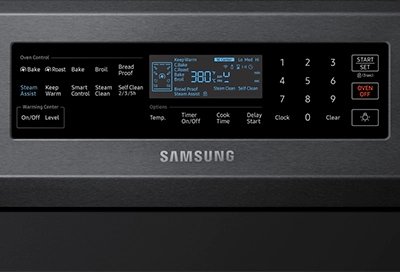
An oven, just like any other appliance, can sometimes face a hiccup or two, and Samsung ovens are no exception. The “LE” error code is a signal from your oven that it needs a little attention. It’s not unlike when your car’s “check engine” light pops on; it’s an alert that something’s not quite right. The “LE” code specifically indicates a problem related to the oven’s heating process, and it’s often linked to issues with the oven’s temperature sensor or its related circuitry.
Now, you might be wondering, “How does this affect my cooking?” Good question! When an oven can’t manage its heat properly, it can’t cook food evenly. This could mean undercooked meals, overcooked edges, or sometimes, an oven that won’t even fire up. It’s like trying to bake cookies with a broken thermostat—you’ll end up with inconsistent results. So, the “LE” code essentially tells you that the oven is having trouble keeping things at the right temperature.
Understanding the Temperature Sensor
The temperature sensor in your Samsung oven is akin to a thermometer. It gauges the oven’s internal temperature and communicates this information to the oven’s control board, which then adjusts the heat output accordingly. You can picture it as someone constantly checking the thermostat in your house to make sure it’s neither too hot nor too cold.
When the temperature sensor malfunctions, it might give incorrect temperature readings—or none at all. This could result in the oven heating up too much, or not enough, leading to cooking inconsistencies. For example, if the sensor tells the control board that the oven’s temperature is lower than it actually is, the oven might end up overheating. Conversely, if it reports a higher temperature, the oven might not heat up sufficiently.
To fix this, you would typically need to check the sensor and its connections. The sensor is usually located inside the oven, attached to the back wall. If you’re comfortable with a bit of DIY, you could use a multimeter to test the sensor’s resistance. Typically, a faulty sensor would need to be replaced to resolve the issue. But if DIY isn’t your thing, calling in a professional might be your best bet.
Checking Electrical Connections
Often, the “LE” error can also be attributed to loose or faulty electrical connections within the oven. Think of it like a loose power cord on a lamp—sometimes it lights up, sometimes it flickers, and sometimes it won’t turn on at all.
Within your oven, wires and connectors link various components, including the temperature sensor to the control board. If these connections are not secure, the sensor might not send signals properly. This disconnection can cause the oven to misinterpret the situation as an “LE” error.
To tackle this, you’d need to inspect the wiring. Turn off the power supply to your oven (safety first!) and open up the oven panel to examine the connections. Look for any burnt, frayed, or disconnected wires and ensure everything is tightly connected. However, always be cautious whenever dealing with electrical components. If you’re uncertain, consulting an appliance repair expert is highly recommended.
Resolving the LE Error
Once you’ve pinpointed the potential cause—whether it be the temperature sensor or the electrical connections—it’s time to resolve the “LE” error. If replacing the sensor or securing the connections doesn’t clear the error, it might be an issue with the control board itself. This part acts as the brain of your oven, processing signals and controlling functions. If it malfunctions, it could misinterpret data from the sensor, causing the error code.
For a control board issue, replacement might be necessary, which can be a bit more involved than swapping out a sensor or tidying up some wiring. It’s akin to replacing the motherboard in a computer—it requires precision and care. You can attempt this on your own if you’re quite handy, but for many, this is where professional repair services shine.
After addressing the issue, resetting the oven could also help. Simply turn off the oven’s breaker for a minute or so, then switch it back on. This could clear any stored error codes. As a preventative measure, regular maintenance of your oven—including checking for loose wires and ensuring components are clean and in good condition—can help avoid encountering the “LE” error in the future.
In summary, while encountering an “LE” error code on your Samsung oven might sound daunting, it often boils down to issues with the temperature sensor or loose connections. With a bit of investigation and the right approach, you can get your oven back in working order and your dinner plans back on track. And who knows? You might even become the resident appliance expert in your household!